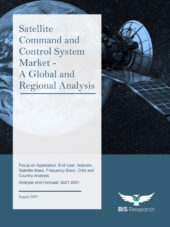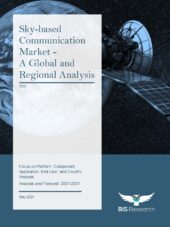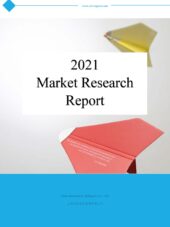Description
Global Aerospace Composites Market
Global Aerospace Composites Market: Market Segments: By Type (Carbon Fiber, Glass Fiber & Aramid Fiber); By Resin Type (Thermoset & Thermoplastic); By Aircraft Type (Commercial Aircraft, Business & Civil Aviation, Civil Helicopter & Military Aircraft); By Application (Interior & Exterior); and Region – Analysis of Market Size, Share & Trends for 2014 – 2019 and Forecasts to 2030
Product Overview
Wide variety of composites are used in the aerospace industry. Composite aircraft consist of commercial aircraft, defence aircraft, helicopters, launchers, and engines. Aerospace composites help to lighten the components ‘weight and improve the engines’ performance. Aerospace composites assist in reducing weight, thus reducing fuel consumption. In the aerospace and aircraft industries, low weight and component reliability are of huge importance.
Market Highlights
Global Aerospace Composites Market is expected to project a notable CAGR of XX.X% in 2030.
Global Aerospace Composites Market to surpass USD XXXX million by 2030 from USD XXXX million in 2018 at a CAGR of XX% throughout the forecast period, i.e. 2019-30. The increase in demand for lightweight composite materials is due to their demand in the aircraft industry, which is the primary factor likely to contribute to the future growth of the aerospace composite market.
Global Aerospace Composites Market: Segments
Carbon Fiber Composites Segment to grow with the highest CAGR of XX.X% during 2019-30
Global Aerospace Composites Market is segmented by Type into Carbon Fiber, Glass Fiber, Aramid Fiber and others. Based on composite types, Carbon fiber composites accounted for the largest volumetric share in the market in 2019.
This can mainly be attributed, as opposed to other materials, to the strong demand for carbon fiber composites due to their high tensile strength, high chemical resistance, high temperature tolerance, low thermal expansion, and outstanding load carrying ability. In defense and aerospace aircraft, there is a growing market for carbon fiber composites. Its insubstantial weight, high strength property, weather-resistant finish, and various surface textures are the reason for major preference among all the composite types.
Global Aerospace Composites Market: Market Dynamics
Drivers
Expanding commercial aircraft fleet
The large-scale demand and adoption of carbon fiber composites for aircraft production is one of the major factors driving the aerospace composite market. Manufacturers of aircraft are increasingly concentrating on the use of lightweight, high-performance structural materials to improve their aircraft’s fuel economy and reduce operating costs. Carbon fiber composites exhibit characteristics such as low weight, high rigidity and high tensile strength, which is they are experiencing high industry demand.
Restraint
High cost of raw materials
The reduction in the number of deliveries of aircraft would directly have an impact on the demand for aerospace composites. As more than 80% of the use of composite material is in commercial aircraft, the reduction in demand for composite material due to the decrease in the number of orders for aircraft will have a negative effect on the industry. In addition, the massive decrease in market capitalization has culminated in the restructuring of the sector.
Global Aerospace Composites Market: Regions
Global Aerospace Composites Market is segmented based on regional analysis into five major regions. These include North America, Latin America, Europe, APAC and MENA.
Global Aerospace Composites Market in North America held the largest market share of XX.X% in the year 2019 owing of the increase in end-user industries and the rising demand in the aerospace industry for lightweight materials. Increased consumption of aerospace composites in the exterior and interior sections of commercial and military aircraft is mainly driving development.
In terms of value and volume, the United States is the world ‘s largest user of aerospace composites, and is expected to further improve its position during the forecast era. The growth of the US market for aerospace composites is due to the involvement of giant players such as The Boeing Company and General Electric Company, along with the establishment in the country of several new composite manufacturing facilities.
Key Developments in the Market:
Several strategic steps have been taken by major players in the industry in recent years to boost their market share. Hexcel Corporation, for example, purchased the aerospace and defence (A&D) company of Oxford Performance Materials, a developer of biomedical polymers, biomedical instruments, and industrial components, in December 2017.
Global Aerospace Composites Market: Key Players
• Bally Ribbon Mills
o Company Overview
o Business Strategy
o Key Product Offerings
o Financial Performance
o Key Performance Indicators
o Risk Analysis
o Recent Development
o Regional Presence
o SWOT Analysis
• Mitsubishi Chemical Carbon Fiber and Composites Inc.
• Toho Tenax
• Toray Industries Inc.
• SGL Carbon SE
• Hexcel Corporation
• Solvay SA
• Royal Ten Cate
• Materion Corp
Global Aerospace Composites Market report also contains analysis on:
Global Aerospace Composites Market:
By Type:
• Carbon fiber
• Glass fiber
• Aramid fiber
• Others
By Resin Type:
• Thermoset
• Thermoplastic
• Others
By Aircraft Type:
• Commercial aircraft
• Business and general aviation
• Civil helicopter
• Military aircraft
• Others
By Application:
• Interior
• Exterior
• Aerospace Composites Market Dynamics
• Aerospace Composites Market Size
• Supply & Demand
• Current Trends/Issues/Challenges
• Competition & Companies Involved in the Market
• Value Chain of the Market
• Market Drivers and Restraints




